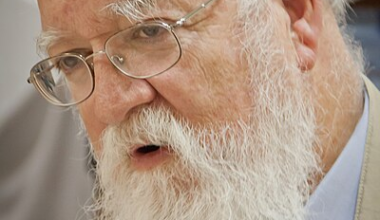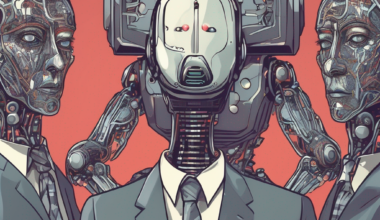
In The Oxford Book of Modern Science Writing (2008), Richard Dawkins writes:
Our ability to understand the universe and our position in it is one of the glories of the human species. Our ability to link mind to mind by language, and especially to transmit our thoughts across the centuries is another. Science and literature, then, are the two achievements of Homo sapiens that most convincingly justify the specific name.
And I think I am justified in saying that Dawkins himself is one of the few who have really managed to combine these two greatest achievements of humanity. In a corpus of work written over half a century, Dawkins has innovated and explained, and he has done so with the ear and eye of a poet. It is appropriate, then, that his new book, The Genetic Book of the Dead: A Darwinian Reverie, is a medley and a melody: a revisiting and extension of his previous ideas about evolution written with elegance and beauty. The very word ‘reverie’ suggests a pleasant and roaming meditation, which is exactly what The Genetic Book of the Dead is. Come to think of it, the quintessentially Dawkinsian phrase ‘a Darwinian reverie’ might just sum up Dawkins’s entire career. Call this book a Dawkinsian medley, or a Dawkinsian melody, then.
My only reservation concerns the seeming finality of the book. Not so much the contents of the book itself, but the publicity surrounding it. Dawkins is currently embarked on a tour marketed (in homage to Sherlock Holmes, I think) as ‘The Final Bow’—a ‘swansong’, his last tour on the road, taking in America and Europe. In riffing on many of his previous themes and producing a book that does what the final section of his 2015 memoir Brief Candle in the Dark attempted—i.e. provides ‘a kind of biologist’s world-view, with an aspiration at least to coherence’—does Dawkins mean us to view The Genetic Book of the Dead as a farewell, too?1 He is 83, after all, and international touring must take its toll. There is, I fear, a soupçon of the elegiac in all this. If it is a farewell, it is a very good one indeed; but I hope that it is not, and that lovers of science and literature can expect still more to come from one of the finest practitioners of both.
Because The Genetic Book of the Dead is a book written by a man clearly still at the height of his powers. As a medley, longtime admirers like me can detect and enjoy references and callbacks galore. Indeed, a great many of Dawkins’s previous books are mentioned, and the title itself is taken from a chapter of what I consider to be perhaps his finest book of all, Unweaving the Rainbow (1998). As a melody, its prose contains the clarity and poetry for which Dawkins is justly famous. It is a worthy addition to the genre of literary science. A few examples should suffice, the first expressing the book’s main argument and purpose:
This is my central message, and it will bear repeating here. The fine-fingered sculpting of natural selection works not just on the external appearance of an animal such as a stick caterpillar, a tree-climbing lizard, a leaf insect or a tawny frogmouth, where we can appreciate it with the naked eye. The Darwinian sculptor’s sharp chisels penetrate every internal cranny and nook of an animal, right down to the sub-microscopic interior of cells and the high-speed chemical wheels that turn therein. Do not be deceived by the extra difficulty of discerning details more deeply buried. There is every reason to suppose that painted lizards or moths, and moulded potoos or caterpillars, are the outward and visible tips of huge, concealed icebergs.
This is what Dawkins means by ‘the genetic book of the dead’: that living things can be read as layered descriptions, ‘palimpsests’, of earlier worlds, and
a scientist of the future, presented with a hitherto unknown animal, will be able to read its body, and its genes, as a detailed description of the environments in which its ancestors lived.
Thus,
The leaf-tailed gecko…embodies the Darwinian ‘memory’ of generations of leaves that fell long before men arrived in Madagascar to see them, probably long before men existed anywhere.

Of course, the ‘Darwinian sculptor’ is not an agent of any kind. It is a mechanistic, entirely natural, and undirected force: a blind sculptor, one might say. That it has produced the magnificent complexity and beauty that is apparent throughout nature, including the ability to write and read books about it, would almost count as a miracle, except that the word ‘miracle’ would cheapen it.
And here is an exemplification of Dawkins’s love of the arts, especially poetry, combined with science, a loving combination that is woven throughout all of his oeuvre:
Once a sufficiently elaborate simulation apparatus is in place in a brain, emergent properties spring up. The brain that can imagine how alternative futures might affect survival can also, in the skull of a Dante or a Hieronymus Bosch, imagine the torments of Hell. The neurons of a Dalí or an Escher simulate disturbing images that will never be seen in reality. Non-existent characters come alive in the head of the great novelist and in those of her readers. Albert Einstein, in imagination, rode a sunbeam to his place among the immortals with Newton and Galileo. Philosophers imagine impossible experiments—the brain in a vat (‘Where am I?’)2, atom-for-atom duplication of a human (which ‘twin’ would claim the ‘personhood’?). Beethoven imagined, and wrote down, glories that he tragically could never hear. The poet Swinburne happened upon a forsaken garden on a sea cliff, and his imagination revived a pair of long-dead lovers whose eyes went seaward, ‘a hundred sleeping years ago’. Keats reconstructed the ‘wild surmise’ with which stout Cortez and all his men stared at the Pacific, ‘silent upon a peak in Darien’.
The ability to perform such feats of imagination sprang, emergently, from the Darwinian gift of vicarious internal simulation within the safe confines of the skull, of predicted alternative actions in the unsafe real world outside. The capacity to imagine, like the capacity to learn by trial and error, is ultimately steered by genes, by naturally selected DNA information, the genetic book of the dead.
Incidentally, Dawkins’s favourite poet Yeats—alongside Keats, one of the heroes of Unweaving the Rainbow—receives his due, too. I hope these quotes demonstrate the falsehood of that enduring criticism of Dawkins, that he is a cold, stern, ‘scientistic’, pure rationalist. How anyone can still think that (and people do) when reading the warm, poetry-laden passages which abound in Dawkins, I cannot fathom. That they probably don’t read him much, if at all, is the likely explanation. And perhaps there is a hint of jealousy in such critiques: how dare he write so well?
There is plenty more characteristic Dawkins in The Genetic Book of the Dead. His endnotes, themselves the latest evolution of Dawkinsian digressiveness, include this little gem:
Anyone who wants to quantitively decipher. Yes, it’s a split infinitive. I like split infinitives, and would like them even if they lacked the imprimatur of Fowler’s Modern English Usage (1968). They accurately convey meaning.
To go boldly, indeed. This sort of thing is one of the many reasons why reading Dawkins is such a joy.
I hope that some of the foregoing doesn’t give the impression that The Genetic Book of the Dead is a sterile exercise in repetition. Yes, it is a medley, full of reprises, and it is a good place to start for anyone new to Dawkins—but out of medleys come new things. As I said, Dawkins continues to innovate in this book, pointing the way for future researchers (‘this finding on bats and dolphins—the specific resemblance of their prestin genes—strikes me as a pattern for a whole field of future research on the genetic book of the dead.’) and extending his earlier arguments—most radically in the book’s final chapter. Indeed, the whole book is an elaboration of an original idea—the genetic book of the dead—long pondered by Dawkins.
He has kept up to date with the latest research, incorporating it to great effect. Even when he is looking back over old ground, as in the chapters recapitulating and defending selfish genery and the extended phenotype, he is answering very recent criticism. He takes Denis Noble, currently one of the most prominent critics of the Dawkinsian view of evolution, to task, displaying his charm, generosity, and rottweiler instincts in equal measure:
There are times when an argument can helpfully be expressed by contrast with its opposite. Disagreement that is clearly stated deserves a clear reply. I could hypothetically invent the opposite of the gene’s-eye view, but fortunately I don’t need to because the diametric opposite has been put, articulately and clearly, by my Oxford colleague (and incidentally my doctoral examiner, on a very different subject long ago) Professor Denis Noble. His vision of biology is alluring, and is shared by others whose expression of it is less explicit and less clear. Noble is clear. He ringingly hits a nail on the head, but it’s the wrong nail… [Noble] is precisely and diametrically wrong, and it will be my business in this chapter to show it.
And so far as this (non-scientist) reader is concerned, Dawkins succeeds, gracefully and fully, in his business. To be disarming and complimentary (as Dawkins is about Noble’s 2016 book Dance to the Tune of Life) while eviscerating the opposition is quite something to behold. Having said that, Dawkins does seem gentler here when discussing past and present arguments—as in the discussion of his great contests with Stephen Jay Gould and Richard Lewontin, for example. (For a thorough elucidation and examination of selfish genery and the debates it has engendered, I recommend J. Arvid Ågren’s 2021 book The Gene’s-Eye View of Evolution. Incidentally, I reviewed that book for Areo Magazine and, alongside Iona Italia, interviewed Ågren about it for Areo’s podcast.)
As to whether Dawkins’s overall thesis in this book is correct, I cannot rightly judge. I suspect that it is, but it would be interesting to hear Dawkins’s response to a concern raised by another eminent evolutionary biologist, Jerry Coyne:
There are two problems with this [thesis]. We can certainly use DNA sequences to reconstruct family trees, confirming our conclusion (already known at from morphology, fossils, and development) that yes, we’re evolved from fishy and reptilian ancestors. But trying to suss out the environments of those ancestors from DNA sequences is probably futile. For one thing, we don’t know what most genes actually do, and thus would be stymied since we don’t know which ancestral DNA constituted adaptations to the environment,—and if so, what kind of adaptations. More important, most of the ancestral DNA we still have has been overwritten by the endless churning of natural selection, so even finding out what deep ancestral genes we had would be nearly impossible today.
One last thing needs to be said about The Genetic Book of the Dead: it is a beautiful objet d’art. It is elegantly formatted, full of colourful photographs, and gorgeously illustrated by Jana Lenzová. Among Lenzová’s drawings, my favourites were the Steller’s sea cow about to meet a bloody end at the hands of human hunters and the great ethologist Konrad Lorenz being imprinted on by geese. The band of hunters in the former is an interesting detail not suggested by the text, demonstrating Lenzová’s independence as illustrator. The main singer of this melody is Dawkins, but that he is not the sole singer is made apparent by Lenzová’s accompanying drawings. What a backing vocalist! (It occurs to me now that Dawkins has always been served well by his illustrators—I am thinking in particular here of Lalla Ward’s lovely contributions to 1996’s Climbing Mount Improbable.)
Perhaps the beauty of this book as an object has something to do with Head of Zeus, by whom this and Dawkins’s previous book, Flights of Fancy (2021)—also illustrated by Lenzová—were published. This latest Dawkinsian phase, of writing lavishly illustrated books about the beauty of science and nature, is one of his most endearing. Dawkins has always been a fantastic teacher, but he might now be at his best.
I feel that I should be a bit defensive about my gushing. I could say, for example, that there are some important things upon which I disagree quite strongly with Dawkins. But ultimately, I don’t feel it necessary. When one reads a great book by a great writer, there is no need to apologise for appreciating it and him. And there is nothing wrong with writing of the joy and stimulation that a book has brought one.
Nothing more needs to be said, except this: Go, now, and read The Genetic Book of the Dead—and behold, and be awed by, the genius of the blind sculptor.
- As an aside, that section of Brief Candle also details the origins of Dawkins’s idea of a genetic book of the dead, including a memorable pub supper with Arthur Cain in Oxford’s Royal Oak. Brief Candle pursues the idea of a ‘memetic book of the dead’, and ponders the relationship between these genetic and memetic books—interesting stuff, which is not, alas, discussed very much in The Genetic Book of the Dead.
This seems a good place to clarify that when I say Brief Candle ‘attempted’ to provide Dawkins’s ‘biologist’s world-view’, I don’t mean to say that it was unsuccessful in doing so. The relevant section of Brief Candle is actually a much broader overview of Dawkins than what appears in The Genetic Book of the Dead. But the latter does, I think, succeed much more thoroughly in outlining the Dawkinsian view of evolution. ↩︎ - A reference to a thought experiment of the late Daniel Dennett, who, as Dawkins puts it in his endnotes, ‘imagined that his brain was removed and sustained in a vat, connected to his body by radio. Thought experiments of this kind convince me that some philosophers do worthwhile things. Especially if, like Dennett, they take the trouble to study science.’ As it happens, I interviewed Dennett in this magazine last year. ↩︎
Related reading
‘An animal is a description of ancient worlds’: interview with Richard Dawkins, by Emma Park
Is ‘intelligent design’ on the cusp of overthrowing evolutionary science? by Samuel McKee
‘We are at a threshold right now’: Lawrence Krauss on science, atheism, religion, and the crisis of ‘wokeism’ in science, interview by Daniel James Sharp
Consciousness, free will and meaning in a Darwinian universe: interview with Daniel C. Dennett, by Daniel James Sharp
From stardust to sentience: How scientific literacy can improve your ability to foster gratitude, by Mohadesa Najumi
80 years on from Schrödinger’s ‘What Is Life?’, philosophy of biology needs rescuing from radicals, by Samuel McKee









Your email address will not be published. Comments are subject to our Community Guidelines. Required fields are marked *
Donate